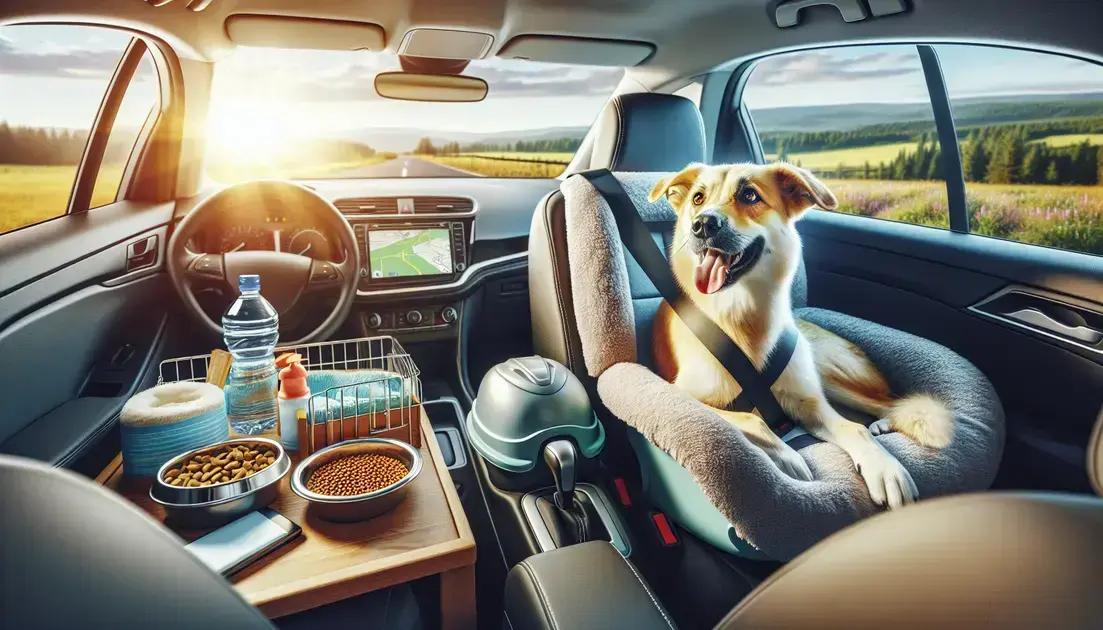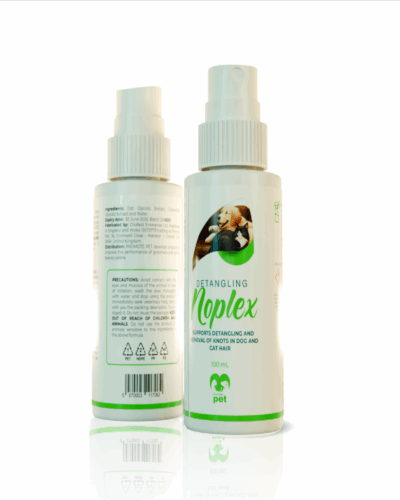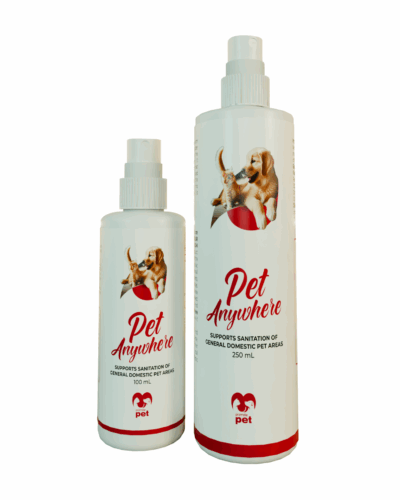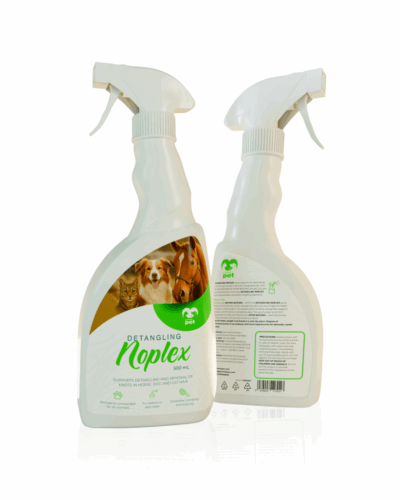Free delivery for orders over £45

How to Travel with Your Dog Comfortably and Safely
Table of Contents
Travelling with your furry friend can be an exciting adventure, but it requires preparation and the right gear. With the right dog travel tips and essential pet travel gear, you can ensure a comfortable and safe journey for both you and your dog. In this guide, you’ll discover how to choose the best travel crate, pack essential gear, and keep your dog comfortable and safe during travels. Whether you’re preparing for long journeys or embarking on outdoor adventures, our tips will make your experience enjoyable.
Choosing the Right Travel Crate
A comfortable journey begins with selecting the right travel crate for your dog. It should not only be spacious enough for your pet to stand, turn around, and lie down but also feature proper ventilation.
Size and Material
Consider the size of your dog to determine the crate dimensions. A snug fit ensures your pet remains secure while travelling, reducing stress and anxiety. Opt for durable materials such as high-grade plastic or metal to ensure longevity and safety.
Safety Features
The travel crate must have sturdy locks to prevent accidental openings. Some crates come with reinforced seams and escape-proof designs, which are excellent choices for rambunctious dogs. Airline Compliance If you’re flying, check with your airline to ensure the crate meets their specific standards. Many carriers require crates to have specific features, like leak-proof designs and certain locking mechanisms. Additional Comfort Include a soft mat or cushion to ensure your dog has a comfortable base to rest on. Some dogs enjoy the scent of home, so placing a familiar blanket or towel in the crate might help ease their travel nerves. Training and Acclimation Allow your dog to become accustomed to their crate before you travel. Encourage your pet to explore and spend time in the crate at home. A few short trips can help make longer journeys less daunting.
Packing Essential Dog Travel Gear
When preparing for a trip with your furry friend, packing the right gear is essential for a smooth journey. Ensuring that your dog’s needs are met can make a significant difference in how comfortable and enjoyable the trip will be for both of you. Here’s a checklist of essential items to consider:
- Collapsible food and water bowls: These are convenient for feeding and hydrating your dog on the go. Opt for lightweight and durable options that are easy to clean.
- Enough dog food and treats: Stick to your dog’s regular diet to prevent upset stomachs and always pack a little extra in case of delays.
- Leash and harness: A sturdy leash and comfortable harness are vital for safety, especially during roadside breaks or exploring new places.
- Poo bags: Cleaning up after your dog is a key aspect of responsible pet ownership. Make sure you pack biodegradable poo bags to manage waste conveniently.
- Comfortable bedding or a blanket: Bring an item that smells like home to help soothe your pet in unfamiliar surroundings.
- Chew toys and entertainment: Keep your dog occupied during long stretches of travel with their favourite toys or distraction items to prevent boredom.
- Grooming supplies: A handy travel-sized grooming kit can help manage shedding and maintain your dog’s hygiene during the trip.
- First aid kit: Pack a basic first aid kit tailored for pets, including antiseptic wipes, bandages, and a tick removal tool to handle any minor mishaps.
- ID tags and paperwork: Ensure your dog is wearing a collar with an updated ID tag, and carry copies of important documents like vaccination records.
By carefully assembling these travel essentials, you help ensure your dog’s safety and comfort, allowing you to focus more on enjoying your journey together. Each item plays a crucial role in making your travel experience as stress-free and enjoyable as possible.
Preparing for Long Journeys
Embarking on extended travels with your dog requires thorough preparation. First, ensure that your dog is accustomed to long durations in vehicles. Start with shorter trips, gradually increasing the distance to build their comfort and stamina. This will also lessen anxiety for both you and your pet.
Pack plenty of water and a portable water bowl to keep your dog hydrated throughout the journey. Stop frequently to allow your dog to stretch and relieve themselves. Regular breaks are crucial to prevent discomfort and restlessness.
Prepare a dedicated space for your dog in your vehicle. A travel crate can provide security and comfort, but if this isn’t suitable, use a pet seat belt harness to keep them safe. It is essential that your dog feels secure during transit, reducing stress and preventing motion sickness.
Consider your dog’s mood and behaviour as well. Maintain a routine as much as possible to provide a sense of familiarity. Bring along a few of their favourite toys or a familiar blanket to create a soothing environment.
Having a plan for overnight stops or unexpected delays is crucial. Research pet-friendly accommodations ahead of time to ensure your dog’s needs can be met at all stages of your trip.
By taking these measures, you can create a travel experience that is enjoyable and stress-free for both you and your furry companion, laying the groundwork for a fantastic trip together.
Keeping Your Dog Comfortable
When it comes to travelling with your furry companion, ensuring comfort is key to a pleasant journey. Your dog’s comfort can significantly impact both its behaviour and overall experience during the trip.
Comfortable Seating: Provide your dog with a secure yet comfortable seating arrangement. If you’re using a travel crate, make sure it’s the right size and has a soft cushion for your dog to lie on. The crate should be well-ventilated, offering plenty of fresh air.
Temperature Control: Monitor the temperature in your vehicle. Dogs can overheat or become too cold quite easily. Ensure your car is neither too hot nor too cold. Keep a thermometer handy to check the environment within the car, adjusting air conditioning or heating as necessary.
Regular Breaks: Schedule regular breaks to give your dog a chance to stretch its legs. Dogs, like humans, need to move around to avoid stiffness and discomfort. Try to stop every few hours to take your dog for a short walk.
Hydration: Keep your dog well-hydrated. Bring a portable water bowl and fresh water supply. Offer them water at every break and when they seem thirsty. Dehydration can lead to discomfort and health issues during travel.
Familiar Items: Bring along familiar items like your dog’s favourite blanket or toy. Familiar scents can comfort anxious dogs and help them feel more at home during transit. Incorporating these items provides both emotional security and a soothing effect.
Noise Management: Consider the noise levels in the vehicle. Some dogs are sensitive to loud sounds which may cause distress. Providing noise-reducing options like playing soft music may keep your dog calm.
By focusing on these areas, you’ll not only ensure your dog’s comfort but also contribute to a seamless and stress-free travel experience.
Ensuring Safety While Travelling
Travelling with your dog requires careful planning to guarantee their safety. To begin, always use a secure harness or pet seat belt when travelling by car. This ensures your dog remains safe in case of sudden stops or sharp turns. Additionally, it helps prevent distractions while driving.
If travelling by plane, make sure to follow the airline’s specific guidelines for pet safety. Invest in a sturdy and appropriately sized travel crate that complies with airline regulations. Check the crate for secure locks and ensure your dog can stand, turn, and lie comfortably within it.
Familiarise yourself with emergency protocols at your travel destination. Knowing the location of the nearest veterinary clinic can be crucial in an emergency. It’s prudent to have your dog’s health records easily accessible, as well as a basic first-aid kit.
While on the road, never leave your dog unattended in a parked vehicle. Temperatures can rise quickly, putting your dog’s health at risk. Always stop for regular breaks. This allows your dog to stretch, relieve themselves, and stay hydrated.
Consider microchipping your dog and ensure their tags are up to date with your contact information. This can facilitate a quick reunion in case you get separated. Using a GPS pet tracker on their collar can also provide additional peace of mind.
Finally, maintaining a consistent routine can help your dog feel secure. Stick to their feeding schedule as much as possible and provide familiar toys or bedding. This familiarity can reduce anxiety and contribute to a safer and more enjoyable trip for both you and your pet.
Managing Health and Nutrition
While travelling with your furry friend, paying attention to their health and nutrition is crucial. A well-planned diet keeps your dog energetic and happy, even far from home. Before setting off, consult your vet about necessary vaccinations or health precautions specific to your destination. Ask if your dog requires any special medications or supplements during travel.
Consider bringing your dog’s regular food to avoid sudden dietary changes, as they can lead to digestive upsets. However, if taking enough food isn’t feasible, identify local stores at your destination where you can get your dog’s preferred brand. Always maintain a consistent feeding schedule to support a balanced routine.
Hydration is equally essential. Have a collapsible water bowl handy, and offer water regularly, especially during summer travels. Monitor their water intake, ensuring they remain hydrated, but be cautious to avoid overhydration during short breaks.
Recognise signs of stress or discomfort in your dog, as travel interruptions might affect their appetite or behaviour. If any health concerns arise, being able to contact a local vet quickly becomes crucial. List down contact information of nearby vets before departure for emergencies.
Finally, creating a pack with basic health supplies, like a first-aid kit, can be invaluable. Include bandages, antiseptic wipes, and other essentials to manage minor injuries or health issues on the go.
Enjoying Outdoor Adventures
Exploring the great outdoors can be a wondrous experience for both you and your canine companion. When embarking on these adventures, it’s essential to ensure everything is set for a safe and enjoyable journey. Before setting out, check the local regulations regarding dogs in outdoor areas—leash laws and restrictions are important to abide by to avoid any issues.
Next, identify suitable locations for your adventure. National parks, hiking trails, and dog-friendly beaches are excellent choices. These spots often offer diverse environments for your dog to explore and enjoy. Always keep your dog on a leash unless in designated off-leash areas, to ensure they do not wander into unsafe areas or disturb wildlife.
Be mindful of the weather conditions. Bring plenty of water for hydration, and a portable water bowl is handy for when your dog needs a drink. In hot weather, watch for signs of heat stress in your dog, and provide shade or restful breaks as needed.
Pack a doggy first aid kit for emergencies, including items like bandages, antiseptic wipes, and necessary medications. Knowing how to handle common injuries, such as cuts or bites, can keep your journey uninterrupted.
Bringing along toys or familiar items can provide comfort and keep your dog entertained during breaks in activity. Using these can maintain your pet’s mental stimulation while exploring new terrains.
Check terrain conditions before venturing far. Rocky terrains, slippery paths, or areas with thorny plants may be challenging for your dog to navigate. Keep their paws protected with dog booties if necessary, to prevent injury.
Always dispose of your dog’s waste properly. Carry biodegradable bags to maintain the environment and trails as pristine as possible.
By preparing well, your outdoor adventure can be a memorable experience filled with exploration, bonding, and fun for both you and your dog, ensuring that you both can enjoy the beauty of nature to the fullest.
Contact Us
- +44 07391626201
- info@promotepet.com
- 16, Cromwell Close - Oxford - UK
COPYRIGHT © PROMOTE PET. ALL RIGHTS RESERVED. © 2024 Chofard Enterprise Ltd. Chofard Enterprise is a company registered in England and Wales with a company number 13073779 VAT number GB 370644889. 16, Cromwell Close, Oxford OX30RW, United Kingdom – trading as Promote Pet Online Shop.











